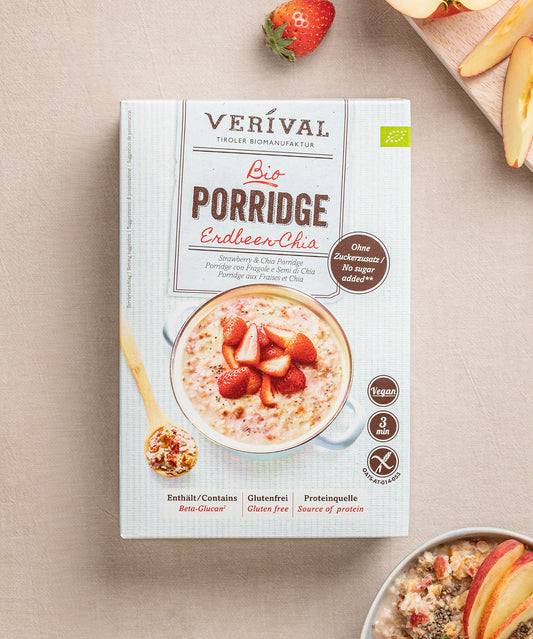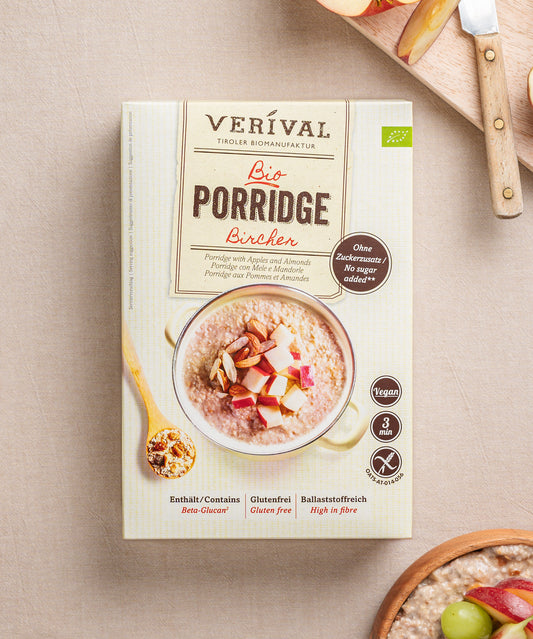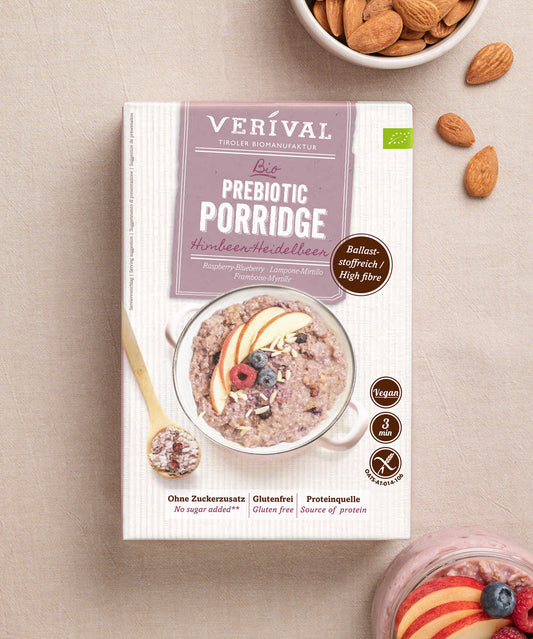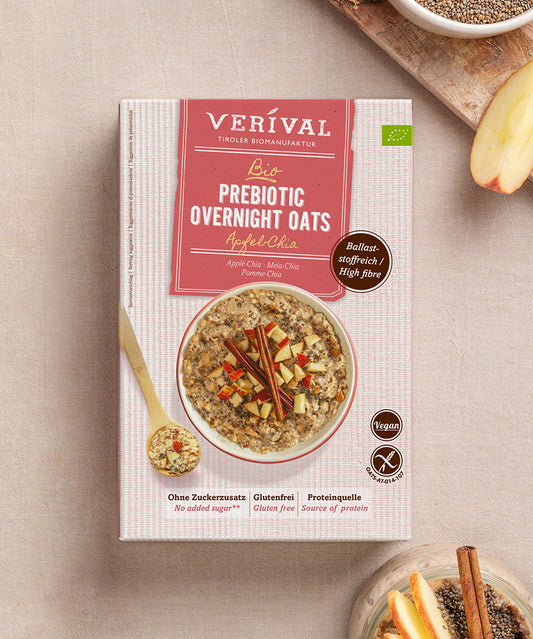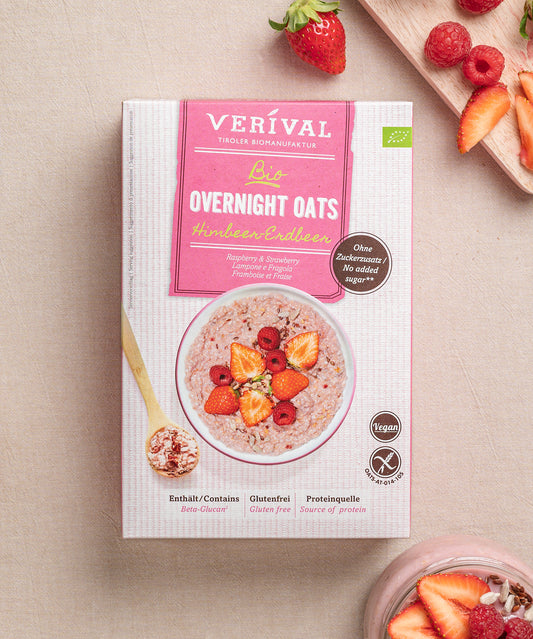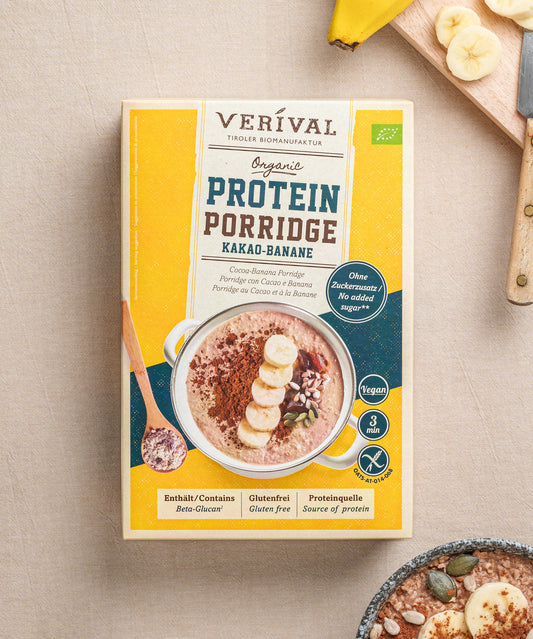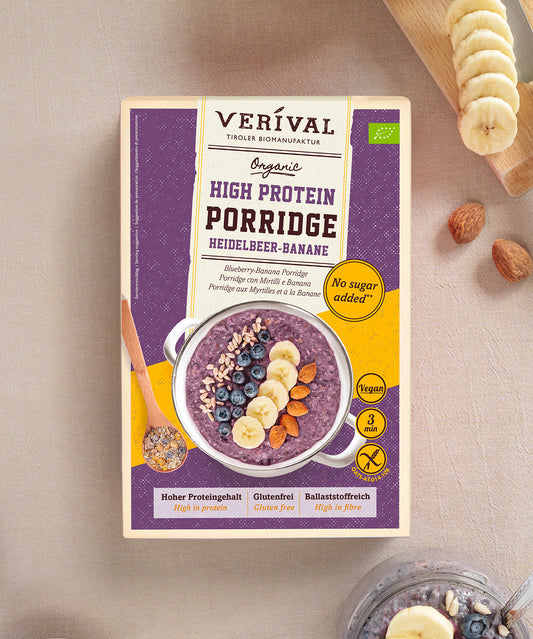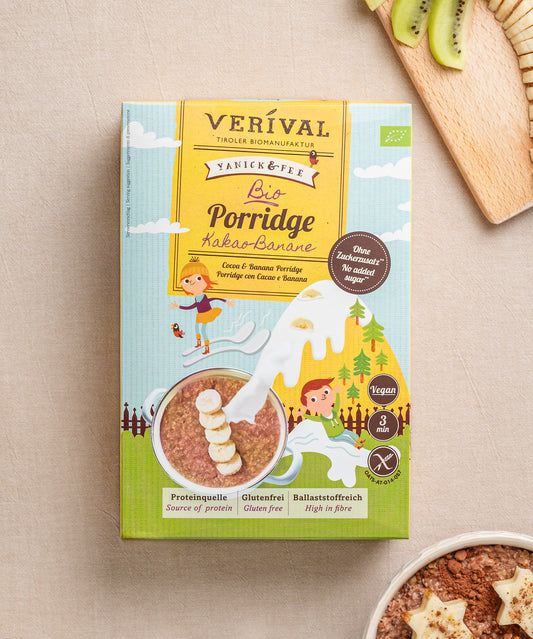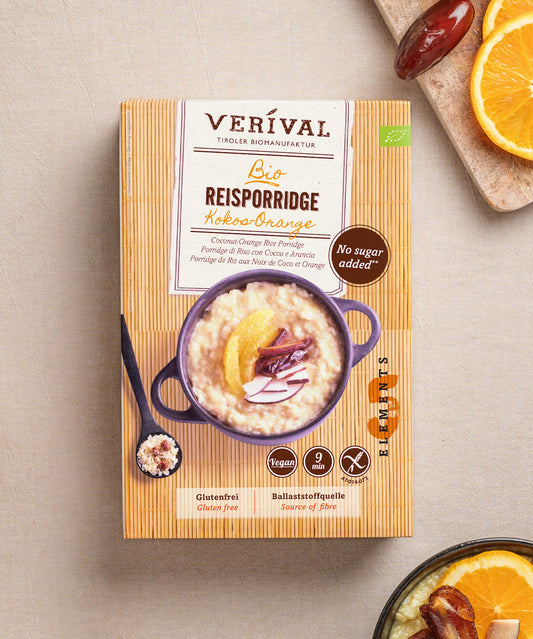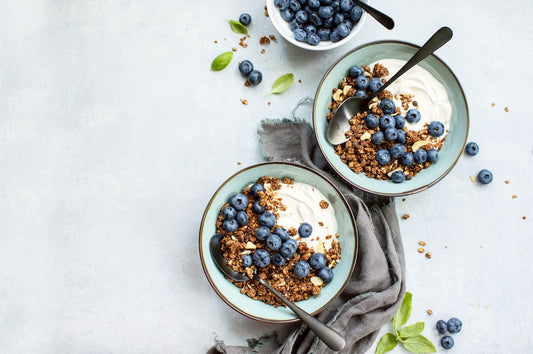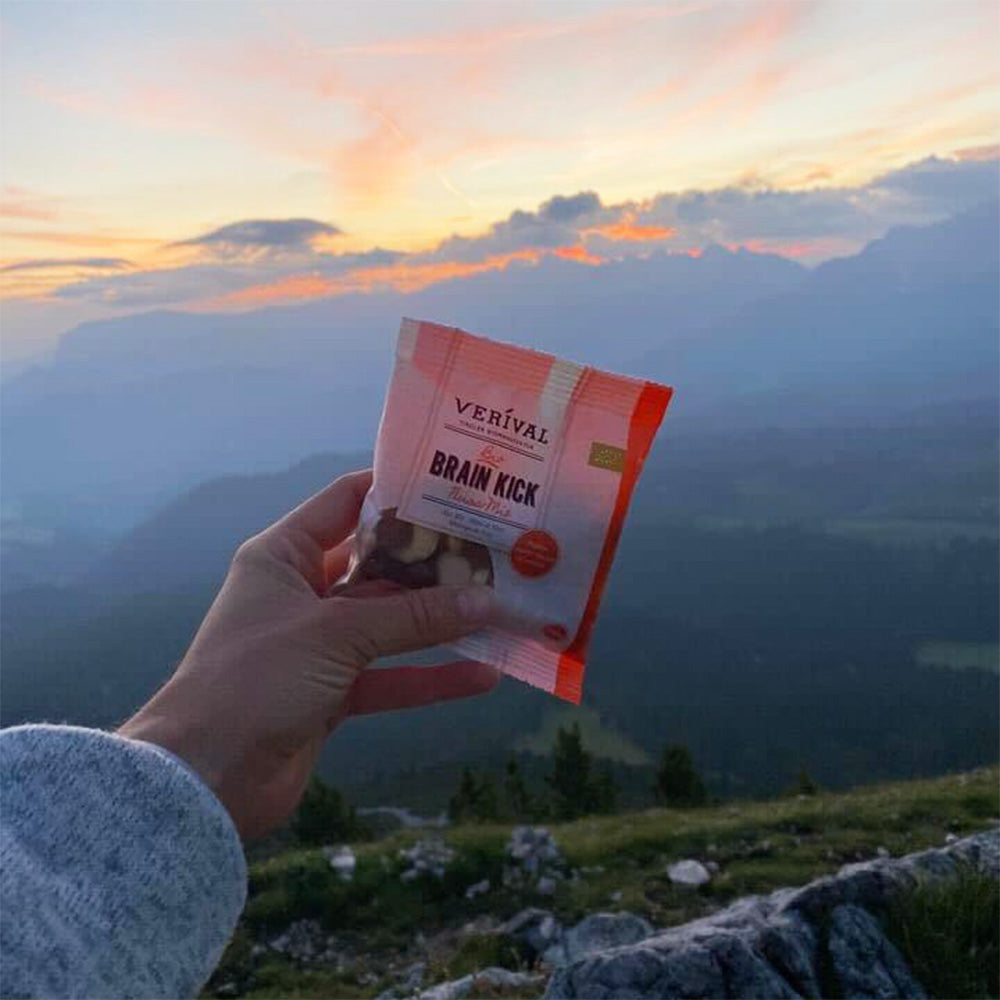Did you know that soy milk is the ideal alternative to cow's milk or other plant-based alternatives?
Making soy milk at home is easier than you think! Making your own offers you many more advantages over store-bought products. In this article, we will show you step by step how to easily make soy milk at home.
Discover healthy breakfasts from Verival
Where does soya milk come from?
Soya milk originated in China, where soya beans have long been valued as an important source of protein. Commercial production began in the 20th century and soya milk quickly spread worldwide, particularly in Europe and North America, due to the increasing demand for plant-based alternatives to cow's milk.
Today, soy milk is a popular choice for vegans and those with dairy intolerances due to its high protein content and versatility in the kitchen.
Benefits of homemade soy milk
Unnecessary additives can simply be left out when making your own, and you can customise the flavour of your soy milk. You have full control over what goes into your soy milk and what doesn't, because store-bought products often contain additives or preservatives. What's more, you'll also save money – plant-based milk alternatives are usually expensive.
Make your own soy milk – healthy and sustainable
By making your own soy milk, you are also promoting sustainability, you are not producing any waste and by using organic soybeans, you can easily improve your environmental balance. In addition, making your own has health benefits; purchased products often have added sugar or other undesirable additives. You can customise your soy milk to suit your individual tastes in terms of sweetness, consistency and ingredients.
How to make soy milk
Soy milk is a delicious and healthy plant-based drink that you can easily make in your own kitchen. Here are the steps to make soy milk from scratch at home.
For the basic recipe, you will need the following:
With these steps, you can make your own soy milk at home and have full control over the ingredients and flavour. Experiment with different quantities and flavours to create your perfect soy milk!
Storage and shelf life of soy milk
Store and enjoy: store homemade soy milk in a clean container in the refrigerator and consume within 3-4 days. Since it contains no preservatives, it will not keep as long as store-bought soy milk. Always shake the soy milk well before consuming it, as the ingredients may settle at the bottom.
How healthy is soy milk really?
Soy milk is not only healthy, but also versatile and has established itself as a popular option in modern nutrition. The growing popularity of plant-based alternatives shows how traditional foods can adapt to modern nutritional trends.
Soy milk is a healthy milk alternative, especially for people who are lactose-free or vegan. It contains no cholesterol, is low in fat and a good source of protein, unsaturated fatty acids and phytochemicals such as isoflavones. These can have positive health effects, but care should be taken not to consume excessive amounts of soy products, as they also contain phytoestrogens, which could be of concern in large quantities.
Soy milk compared to cow's milk
Compared to regular cow's milk, soy milk offers some advantages. It contains no cholesterol and is generally low in fat, making it an attractive option for those looking to watch their fat intake.
In addition, soy milk is a good source of protein, which is essential for building muscle and repairing tissue. It also contains a balanced amount of unsaturated fatty acids, which can contribute to heart health. In addition, soy milk contains phytochemicals such as isoflavones, which have antioxidant properties and can have potentially beneficial health effects.
However, as with all foods, it is important to enjoy them as part of a balanced diet and to moderate consumption.
This is because soy products also contain phytoestrogens, plant-based compounds that can have estrogen-like effects in the body. While moderate amounts are usually safe, large amounts could be problematic for some individuals, especially men or individuals with hormonal imbalances.
Soy milk vs almond milk
Soy milk and almond milk are both popular plant-based alternatives to cow's milk. Soy milk is creamier with a slight nutty flavour, while almond milk has a lighter texture and delicate almond flavour. Soy milk is higher in protein and calories, while almond milk is lower in calories and fat. However, the choice between the two depends mainly on individual preferences and nutritional needs.
How many calories are in soy milk?
The calorie content of soy milk can vary depending on the brand, additives and how it is prepared. In general, 1 litre of soy milk contains an average of about 400-500 calories. These fluctuations can be due to various factors, including the fat content, whether it is fortified and whether sweeteners are added.
It is important to note that some commercial soymilk products may contain added sugars or fats to enhance flavour or alter consistency. These additives can significantly increase calorie content and detract from the health value of the soymilk.
Therefore, it is advisable to check the nutrition information and ingredients list on the packaging to see if the product contains added calories from sugars or fat. By choosing soy milk products with lower levels of added sugars and fat, consumers can better control their calorie intake and promote a healthier diet.
The nutritional values of soy milk
Soy milk is rich in nutrients and a good source of protein, unsaturated fatty acids, vitamin B2 and vitamin B12 (in fortified varieties). Here are the average nutritional values per 100 ml of soy milk:
| Calories | 40-50 kcal |
| Protein | 2-4 grams |
| Fat | 2-3 grams |
| Carbohydrates | 1-2 grams |
| Fibre | 0.5 grams |
| Vitamin B2 | 0.1 mg |
| Vitamin B12 | 0.4 µg (in fortified varieties) |
Nutritional information for soy milk
Avoid these 3 mistakes when making homemade soy milk
Homemade soy milk is easy to make, but there are common mistakes that you should try to avoid. Here are three mistakes you should avoid when making soy milk at home for the best results:
1. Not filtering it
A common mistake when making soy milk is insufficient filtration. After blending the soaked soybeans with water, it is crucial to carefully filter the mixture through a fine sieve or clean dish towel to remove any solid residue. Incomplete filtration can result in a gritty and unpleasant texture of the soymilk, which can detract from the drinking experience. Be sure to filter the soymilk thoroughly and squeeze the soya bean mass well to achieve a smooth and creamy consistency.
2. Avoid excessive sweeteners
Another common mistake is adding excessive sweeteners such as sugar, honey or syrup. Although a slight sweetness can enhance the taste of the soy milk, it is important not to add too much sugar. This can reduce the health benefits of the drink and lead to excessive calorie consumption, especially with regular consumption. Enjoy the natural sweetness of the soybeans and add only a little sweetener if necessary. This way, your soy milk will stay healthy and balanced.
3. The right blend is crucial
Another mistake to avoid is insufficient blending of the soybeans with water. To achieve a consistent soy milk texture, it is important to blend the soybeans thoroughly with water. Poor blending can result in lumpy soy milk that is not pleasant to drink. To get the best results, make sure you blend the soybeans thoroughly until a creamy liquid is formed.
By avoiding these three common mistakes when making soy milk at home, you can ensure that your homemade soy milk is smooth, creamy and delicious. Experiment with different techniques and ingredients to find the perfect soy milk for you.
Breakfast recipes with soy milk
Want to prepare delicious breakfasts with soy milk? Here you will find 3 healthy breakfast recipes with soy drinks:
Discover organic porridge from Verival
Conclusion
Soy milk is a healthy and delicious milk alternative that is easy to prepare at home. With its high protein, unsaturated fat and vitamin content, it is a popular choice for vegans, lactose-intolerant people and anyone looking for plant-based milk alternatives. By paying attention to the quality of the soya beans, the preparation and the ingredients, you can ensure that you enjoy a high-quality and healthy soya milk. Granola tastes particularly good with homemade soy milk, and you can also use it to refine your porridge, giving it an even creamier taste.
Frequently asked questions
How healthy is homemade soy milk?
Homemade soy milk is healthy because it is free from artificial additives and preservatives. The sugar content can be chosen individually and it is rich in proteins and nutrients.
How can I make soy milk myself?
You can easily make soy milk at home by soaking soybeans overnight, then mixing them with water and filtering them with a sieve or nut bag.
How do I preserve soy milk?
Homemade soy milk can be stored in the refrigerator for 3-4 days.
Why does homemade soy milk taste different?
Homemade soy milk can taste different because it is fresher and contains no added flavours or sugars. However, the taste of homemade soy milk depends on what you add to it.
How good is soy milk for you?
Soy milk can be a good option; it is high in protein, fibre, vitamins and minerals such as calcium and vitamin D. It is especially beneficial for people with lactose intolerance or vegans.
What ingredients are used in soy milk?
The ingredients for homemade soy milk are soybeans and water. However, some recipes also contain sweeteners and flavourings.
Can soy milk be frozen?
Yes, soy milk can be frozen. However, it is important to note that you should shake it well after thawing and before consumption, as the texture can change.


